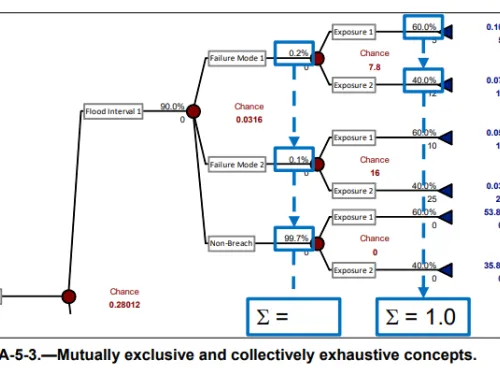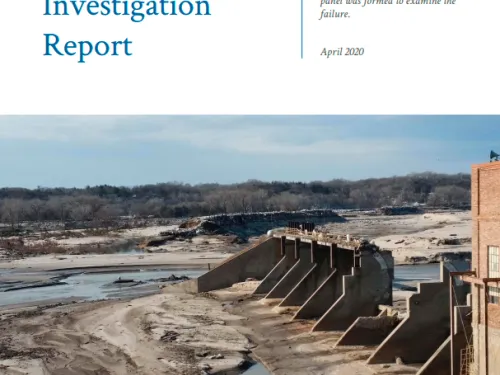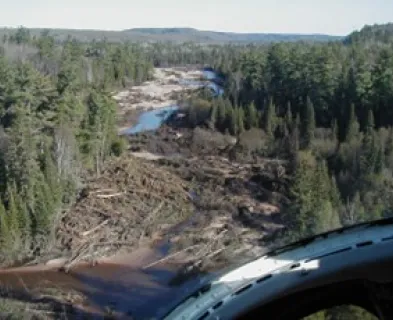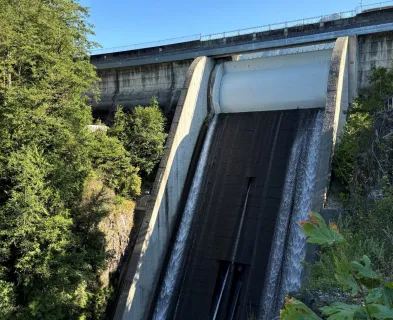The study of past incidents and failures aids in the assessment of existing dams.
Introduction and Background
Engineers and dam owners assigned the responsibility for the safety of dams need to periodically analyze the safety/risk of each dam assigned to them because the condition and vulnerability of the dam can change over time and because changes occur to engineering standards of practice (reflecting a better understanding of how dams perform). The safety of dams is particularly difficult to analyze because each dam is unique in its design, construction, and physical, geographic, and hydrologic settings.
In the past, safety evaluation of dams was based primarily on a dam’s visual inspection and standards-based analyses. For example, hydrologic and hydraulic studies were performed to assure that the dam had adequate capacity to pass extreme floods such as the Probable Maximum Flood. However, many vulnerabilities in dams (such as a permeable zone in a foundation that

could lead to an unfiltered exit and the initiation of internal erosion, or a spillway hydraulic problem during a flood that could lead to the initiation of cavitation damage or stagnation pressures that destabilize and fail spillway chute slabs) are not discoverable during a visual inspection or a comparison of design parameters with regulatory standards. History shows that dams often fail in surprising and unique ways, combining human factors with dynamic and complex physical factors.
The emergence of risk-informed dam safety practices in the last 25 years uses the approach of comparing a dam’s design, construction, and performance with modern design/construction practices, enhanced by an understanding of how dams have failed in the past. Dam safety engineers who have knowledge of past failures are better able to spot flaws and weaknesses that could progress to failure in the dams they evaluate. The combined statistical data of past failures and incidents can also provide important probability information for dams under study in a risk analysis.
While the study of past dam failures and incidents supports numerous dam safety topics (including technological and regulatory advancements in dam safety), this lesson learned focuses on how the study of numerous past incidents and failures supports performing risk analysis of existing dams. Since risk analysis is a newer approach, an overview of the steps of completing a risk analysis is also included.
A dam risk analysis is performed in a multi-step process by a multi-disciplinary team. Knowledge of dam failures and incidents can be helpful throughout the process.
How Knowledge of Failures and Incidents Supports Risk Analysis – Step by Step
1. Collection of all dam record information including dam design/construction, performance monitoring, inspections, correspondence, incidents and repairs.
Many dams, especially older dams have experienced previous incidents or performance problems. Efforts to research and collect dam information can focus on getting information about past incidents if they are known. Past incidents should be an area of focus of the research – past performance may indicate future performance.
2. Formation of a multidisciplinary team
Dam failures are often multi-disciplined and involve multiple physical and human factors. Knowing this, the risk analysis team may include many disciplines and others such as geologists, operations personnel, mechanical engineers and other specialists. Recognition that dam operation and maintenance are common factors in past failures and incidents supports the inclusion of local dam staff on the risk analysis team.
3. Review of the dam record
This step involves the review of all information about the dam including site investigations, dam design, construction records, performance and inspections. Analysts who have knowledge of past failures and incidents are more likely to spot flaws and vulnerabilities in the dam record. Reviewers also evaluate each feature and consider whether the design and construction and subsequent modifications are current with current state of practice (Current practices are often a result of or response to past failures and incidents). Review of past performance (particularly with older dams) may reveal dam safety incidents. Unless addressed through dam repair, past incidents can reoccur and are often found to involve potential failure modes that become risk drivers.
4. Brainstorm potential failure modes (PFMs)
During this step, based on team member experience, review of the record, and familiarity with more common as well as less common potential failure modes, the team generates a long list of ways the dam under study could fail.
5. Development of the dam’s PFMs
A full PFM description documents the initiation, progression, and continuation through the breach of the dam. Past dam failures and incidents provide insights into how this process could happen at a particular dam, including ways that include complex system interactions, operational considerations, and human factors.
6. Identification of factors making each PFM more or less likely
While a potential failure mode at a dam under analysis will not be exactly like a dam that has failed in the past, the similarities and differences support identification of factors that make the failure mode more or less likely. These positive or adverse factors should be documented in the risk analysis. PFMs judged to be credible are carried forward while those judged to be less credible are documented and set aside.
7. An evaluation of consequences of dam failure (focusing on potential loss of life)
Reclamation’s Consequence Estimation Methodology is based upon the analysis of over 60 natural floods and dam failure case studies. Understanding how people lose their lives in dam failures is crucial to estimating loss of life of dams under analysis.
8. Multi-disciplinary, facilitated risk workshop to assign risk. Placement of each PFM on a risk chart with tolerability criteria.
During the workshop, participants with knowledge of past failures and incidents can often compare and contrast the potential failure modes of the dam being analyzed with past failures and incidents. As biases and other human factors have been factors in past failures and incidents, workshop participants are encouraged to discuss their potential biases at the beginning of the workshop.
9. Documentation of the risk analysis with identification of key risk drivers, uncertainty, and confidence. Making the case for risk acceptance or risk is not acceptable and interim or long term risk reduction actions are necessary.
When risks are unacceptable, comparison of the dam under analysis with specific past failures and incident cases can make the potential risks at the dam under study more understandable and credible to stakeholders including senior executives and the public.
References:
(3) Engemoen, W. and C.G. Redlinger (2009). "Internal Erosion Incidents at Bureau of Reclamation Dams." Proceedings of the 29th Annual USSD Conference. United States Society on Dams: Nashville, Tennessee.
This lesson learned was peer-reviewed by Bill Fiedler, P.E., HDR, Inc.
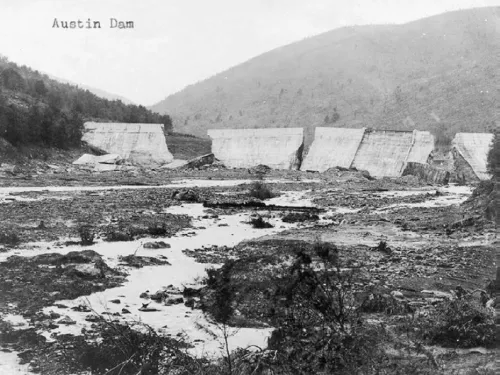
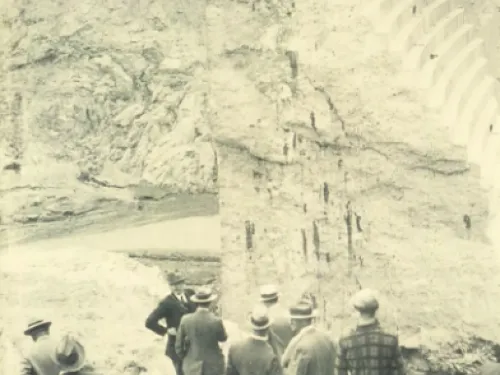
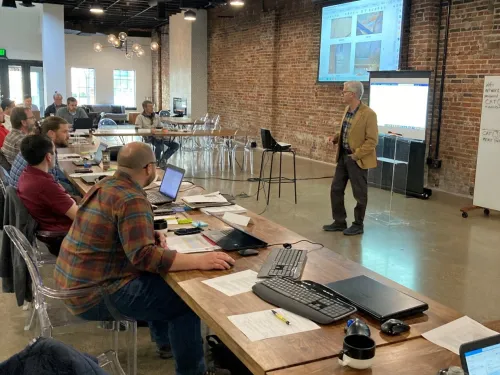
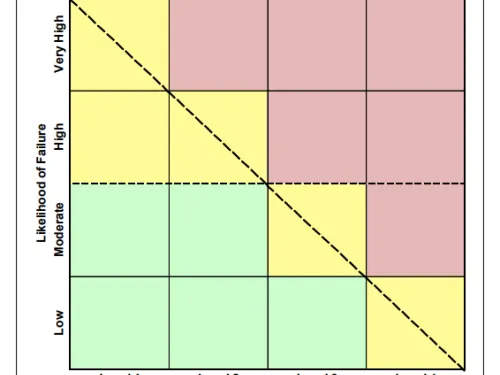
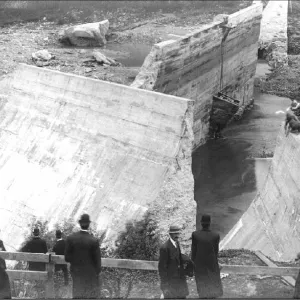
Austin (Bayless) Dam (Pennsylvania, 1911)

Fontenelle Dam (Wyoming, 1965)
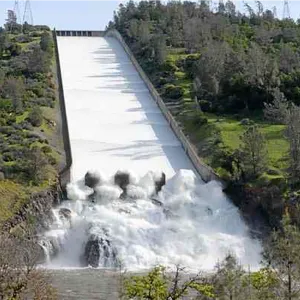
Oroville Dam (California, 2017)

Spencer Dam (Nebraska, 2019)
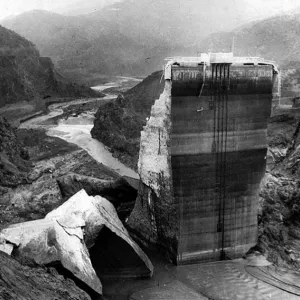
St. Francis Dam (California, 1928)

Teton Dam (Idaho, 1976)
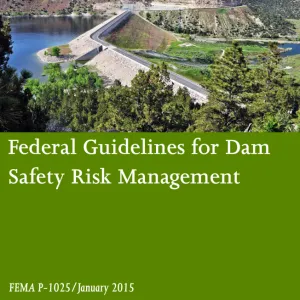
Federal Guidelines for Dam Safety Risk Management
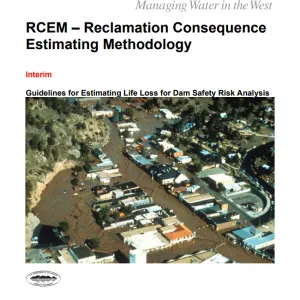
RCEM - Reclamation Consequence Estimating Methodology: Guidelines for Estimating Life Loss for Dam Safety Risk Analysis

Risk Management - Best Practices and Risk Methodology

